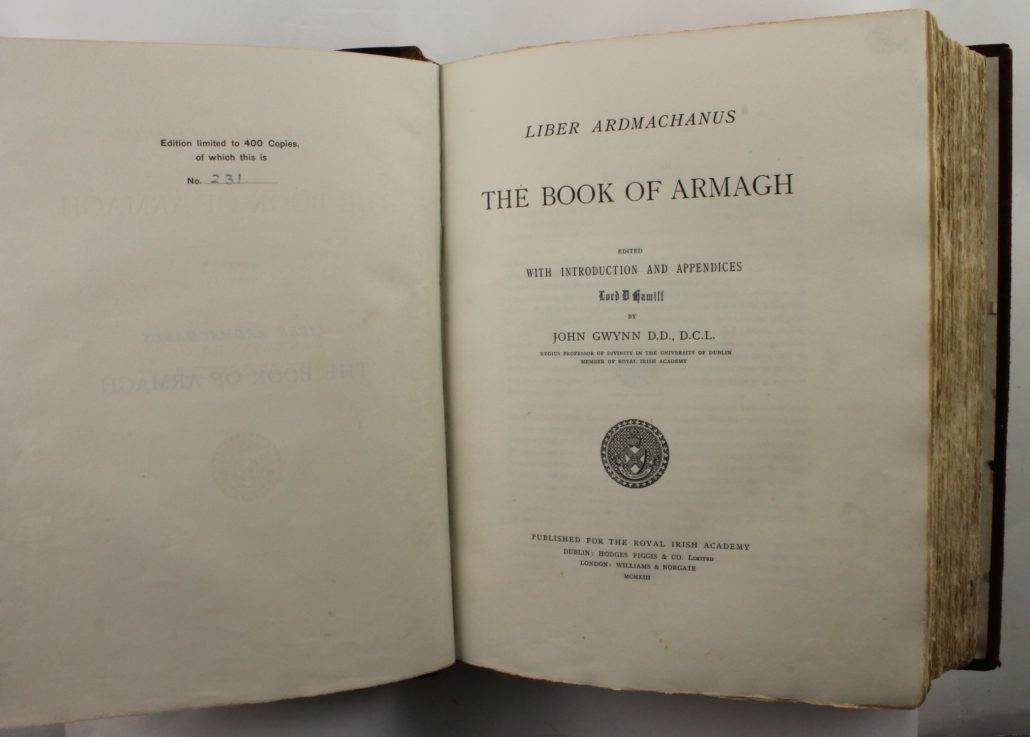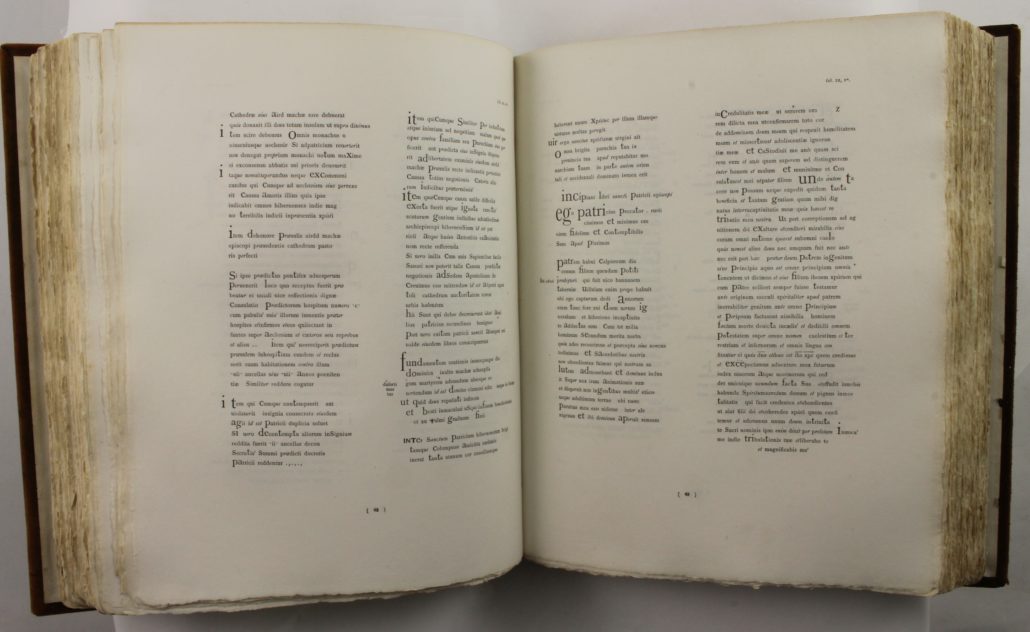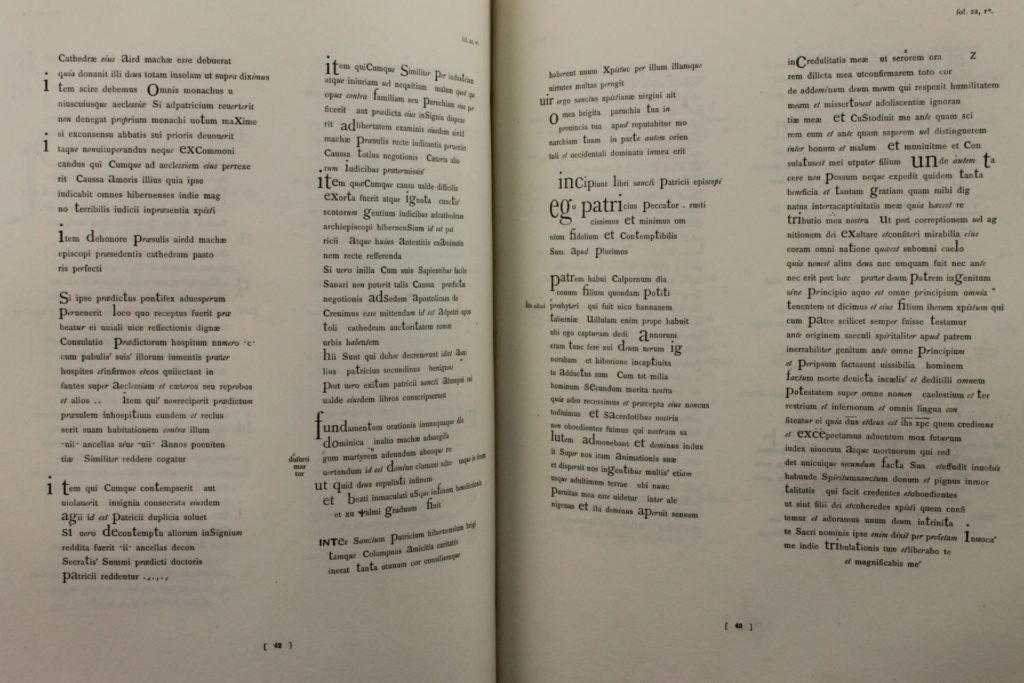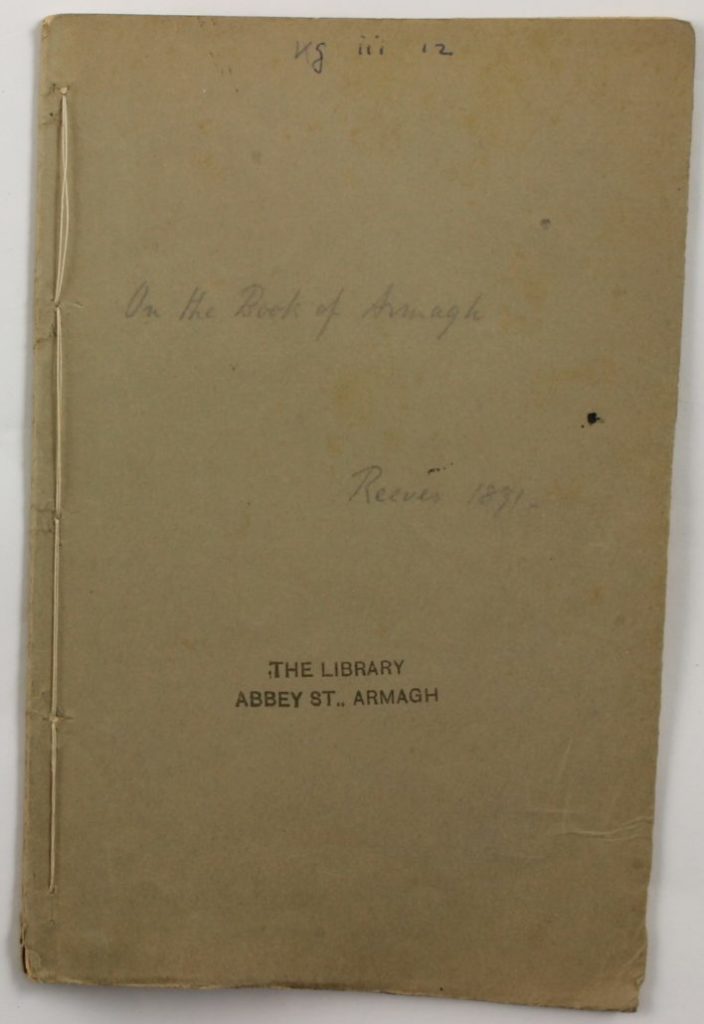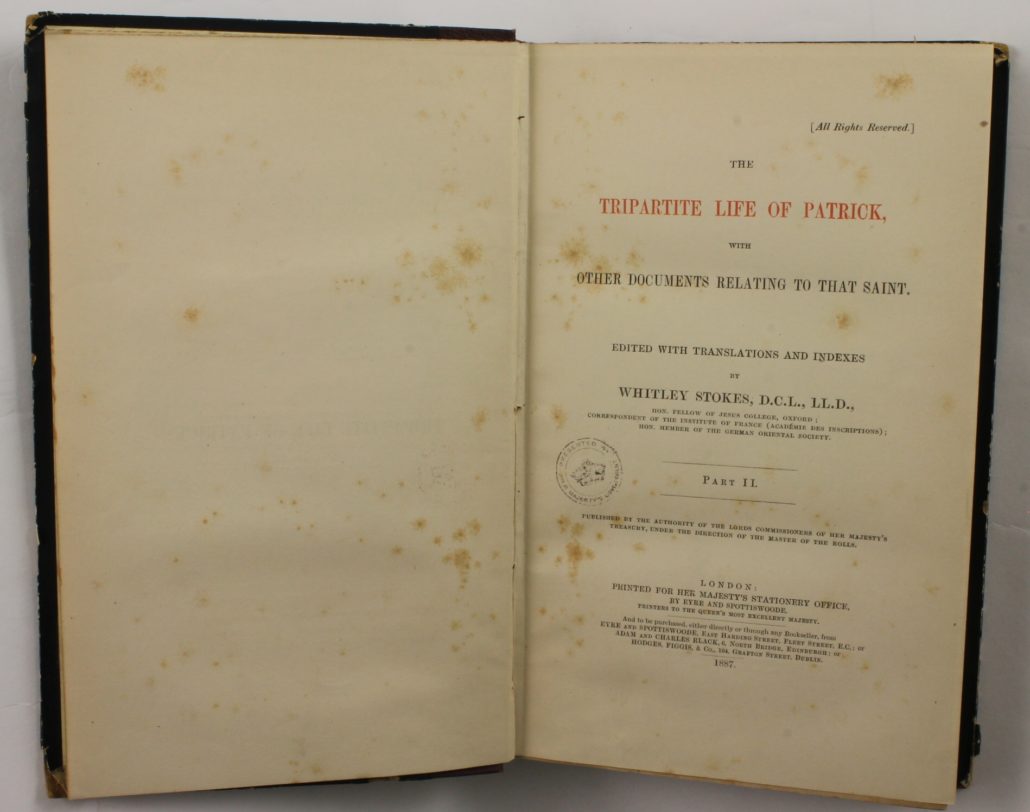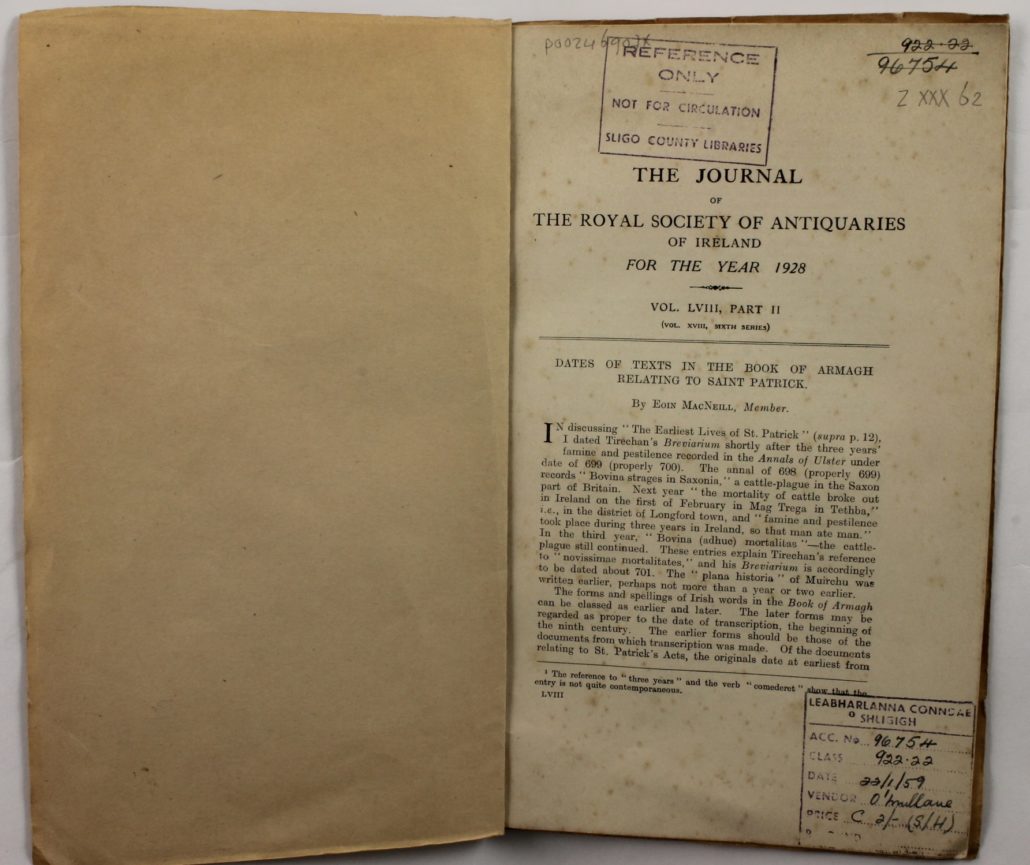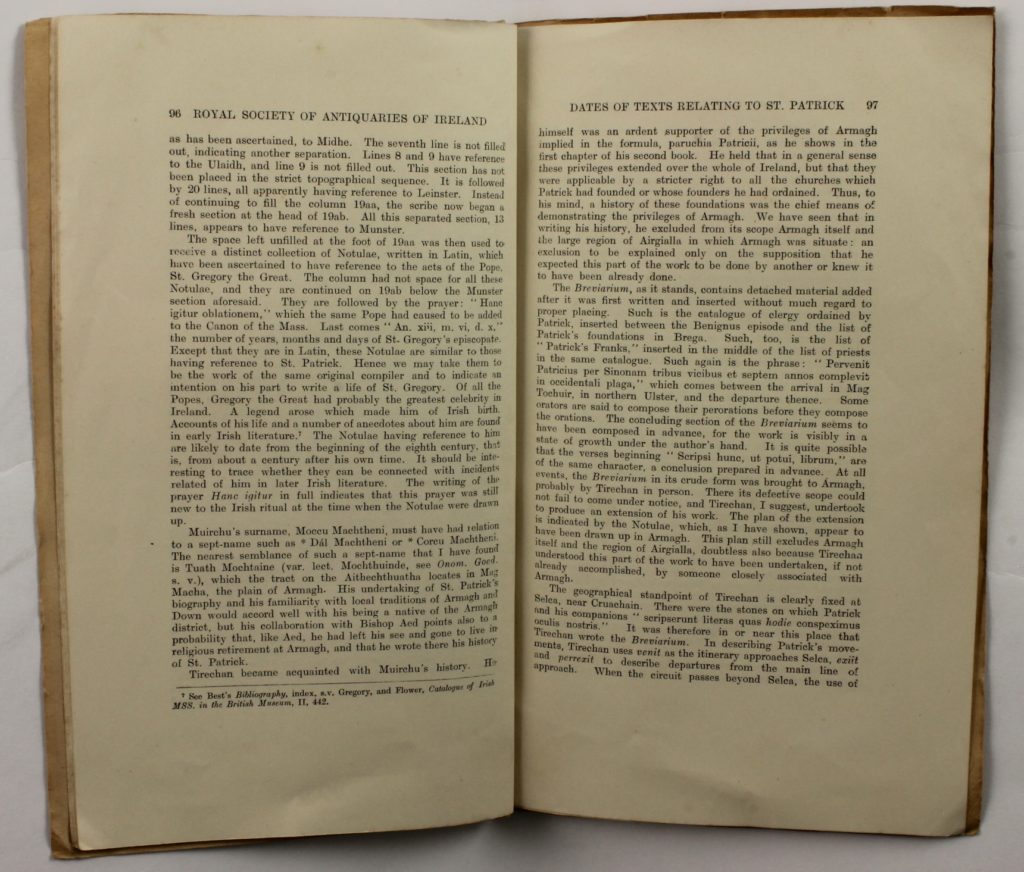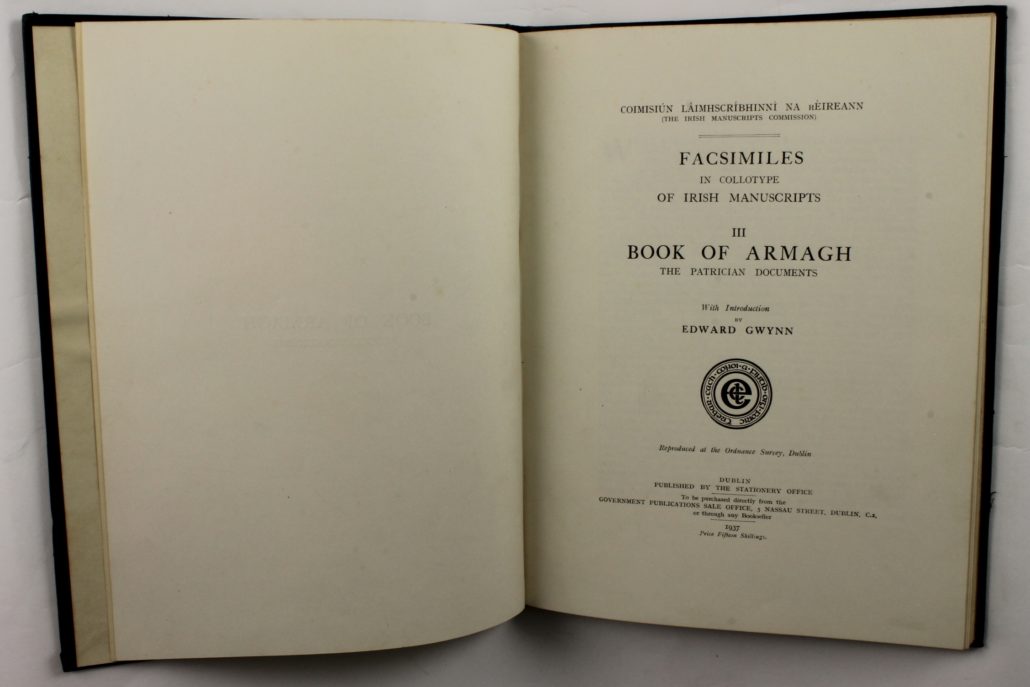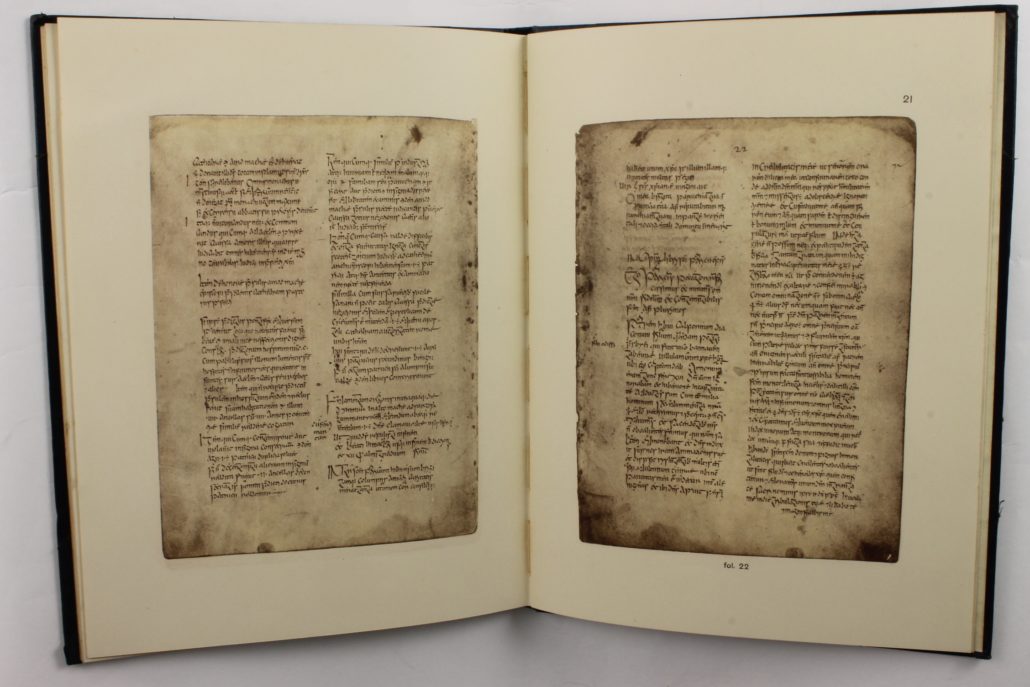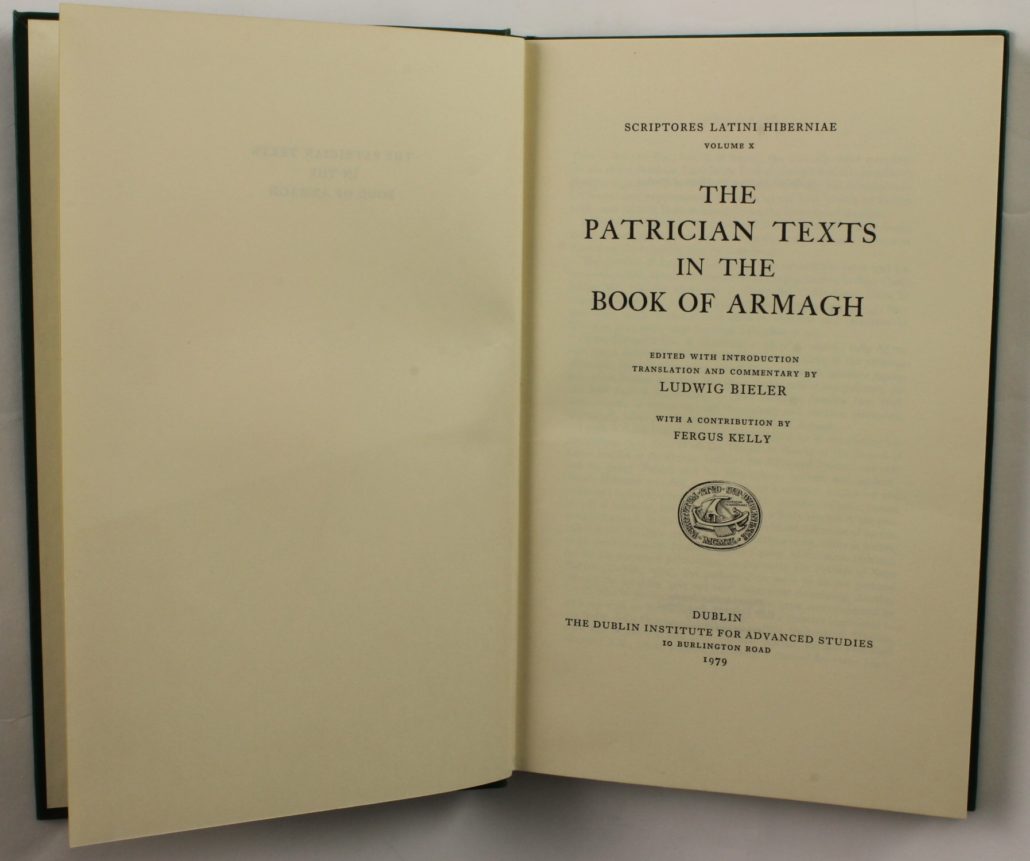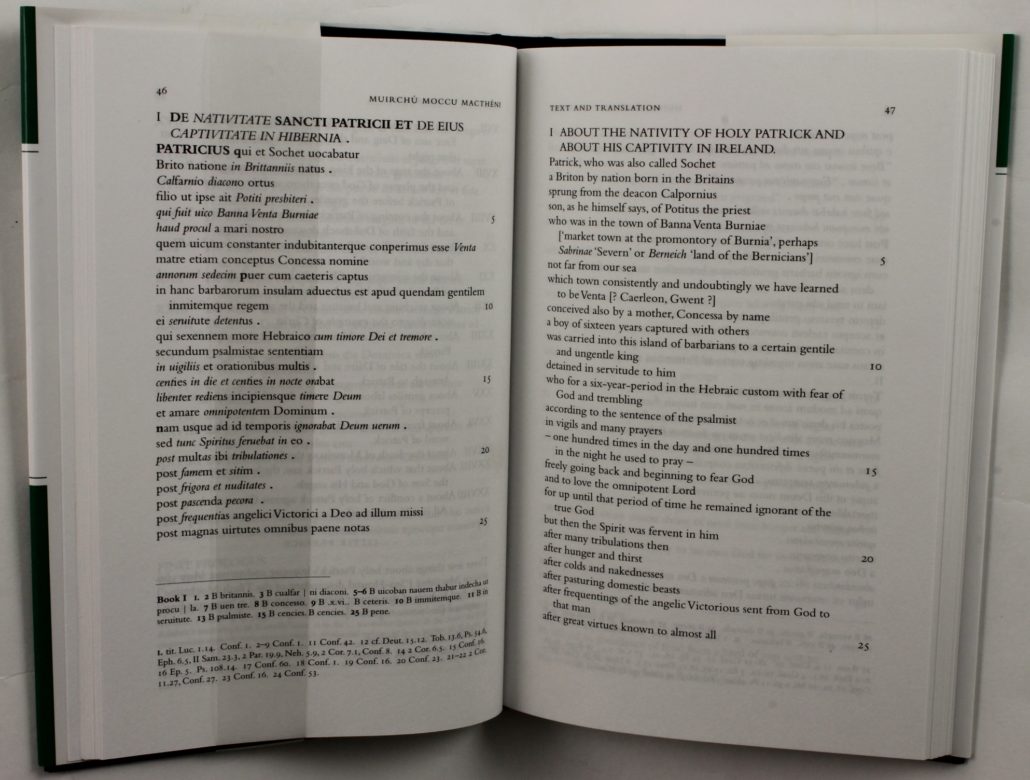
The Book of Armagh is a priceless manuscript written by the monastic scribe, Ferdomnach, in Armagh around the year 807 AD.
In 1913 it was reproduced in a limited edition of 400 copies. To mark the centenary of this edition, Armagh Robinson Library mounted this book exhibition.
The Library marked the centenary for three reasons. First, the Book of Armagh is a tangible connection with the first centuries of Christianity in Ireland, and with the origins of Armagh as its ecclesiastical capital.
Second, as Canon Fleming stated in his booklet: ‘It is generally accepted that The Book of Armagh was most likely written in the ancient Abbey of St Peter and St Paul, which stood near the top of Abbey Street, …’ This would have been across the road from where Armagh Robinson Library now stands.
The third reason is the connection with Dr William Reeves, a former Keeper of Armagh Public Library, antiquarian, scholar and bishop. Reeves carried out research over many years towards the publication of ‘The Book of Armagh’. Unfortunately, he died before the task was completed and his work was handed on to Dr. John Gwynn, Professor of Divinity at Trinity College, Dublin, who finalised the work for publication. Dr Gwynn spent more than twenty years on this work, which included a reproduction of the text in modern type, page by page, line by line, word by word and letter by letter. He also supplied a detailed introduction and appendices.
The Book of Armagh
The Book of Armagh is a priceless manuscript written by the monastic scribe, Ferdomnach, in Armagh around the year 807 AD. It contains 6 pieces of writing:
- A life of St Patrick written by Muirchu;
- A Memoir of St Patrick’s Mission by Tirechan;
- Liber Angeli (The Book of the Angel) concerning the rights and usages of the Church of Armagh;
- The Confession of St Patrick;
- The complete New Testament;
- A life of St Martin of Tours
At the time of writing, Armagh was famous for its monastic school, which was attended by students from England and the Continental Europe.
It is said that The Book of Armagh was most likely written at the ancient Abbey of St. Peter and St. Paul, which was located near the top of Abbey Street, across the road from where Armagh Robinson Library now stands.
The Book of Armagh stayed in the possession of the same custodian MacMoyer family until 1707. In that year the book came into the possession the Brownlow family and remained there for six generations.
In 1853, the then librarian of Armagh Robinson Library, William Reeves, purchased the manuscript with £300 of his own money for the Library.
Money worries however meant Reeves was forced to sell it on to Primate Lord John G. Beresford, who in turn donated it to Trinity College Dublin, where it remains to this day.
Liber Ardmachanus. The Book Of Armagh John Gwynn 1913 P001554308
This 1913 publication on the Book of Armagh was a diplomatic edition: an accurate reproduction of the historic manuscript, with all the important features of its typography. It includes spelling, insertions, deletions, punctuation, abbreviations, and other alterations, as well as the illuminations. The text was reproduced paginatim lineatim verbatim literatim: page by page, line by line, word by word, letter by letter.
The first half of the edition contains an extensive description and in-depth analysis of all three parts of the Book. The second half contains the actual transcription.
On the Book of Armagh William Reeves 1891 P001207454
Bishop William Reeves (1815-1892) carried out considerable research on the Book of Armagh, producing:
- Two printed memoirs on the history and contents of the manuscript;
- A transcript of the Patrician Documents, with annotations, and a draft Index;
- A collation with the Vulgate of the whole New Testament text of the manuscript ; also of four other Vulgate texts of Celtic origin;
- A collation of the Saint Martin text with a printed edition.
The Tripartite Life of Patrick With Other Documents Relating to That Saint. With Trans. and Indexes. Whitley Stokes 1887 P001149691
Celtic scholar and philologist Whitley Stokes (1830–1909) edited and translated many important early medieval texts from Ireland, in Latin and Irish.
This two-volume edition of works about Patrick, the fifth-century apostle to Ireland, was first published in 1887.
Volume 2 contains a range of works dating from the fifth to the eleventh centuries, including excerpts from the Book of Armagh.
Dates of Texts in the Book of Armagh Relating to Saint Patrick Eoin Macneill 1928 P00246907x
A work dating the texts in the Book of Armagh, based on, amongst others, the forms and spellings of the Irish words in the texts, and on the places and people mentioned.
Book of Armagh : The Patrician Documents Edward Gwynn 1937 P001152951
Collotype reproductions of the documents on Saint Patrick from the Book of Armagh, introduced by Edward Gwynn, son of the publisher of the 1913 diplomatic edition, John Gwynn.
The Patrician Texts in the Book of Armagh Ludwig Bieler 1979 P001896594
Transcriptions and translations of the documents on Saint Patrick, including a critical analysis.
Muirchú Moccu Macthéni’s ‘Vita Sancti Patricii’. Life of Saint Patrick David Howlett 2006 P002473179
Text analysis and translation of one part of the Patrician Documents, Life of Saint Patrick, by Muirchú Moccu Macthéni, including new insights.
Fleming-The-Book-of-Armagh
Rev. W.E.C. Fleming, author of Armagh Clergy 1800-2000, wrote a new history on the Book of Armagh to mark the centenary of the publication of the reproduction of the Book of Armagh.

